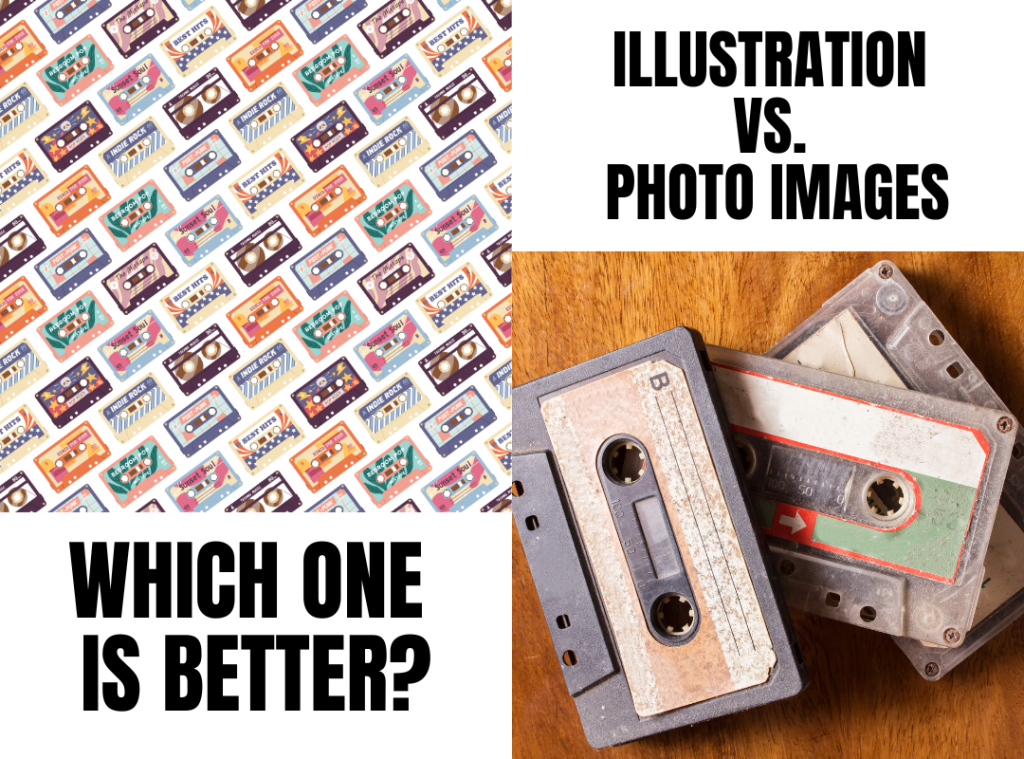Updated August 13, 2024
With ever-changing search engine algorithms, having high-value content is paramount.
The kind of content Google likes to see is useful, informative, structured strategically, and relevant. It takes more than just written content to scale SERPs.
That’s why supplemental content is an absolute game-changer.
What is Supplemental Content and Why Does it Matter?
Supplemental content in content writing refers to any additional material that can complement or enhance the main content of a piece of writing. This can include images, videos, infographics, tables, audio clips, or any other multimedia elements that help to further illustrate or explain the ideas presented in the main content of the page.
The purpose of supplemental content is to provide readers with a good user experience and a more comprehensive understanding of the topic at hand. It can help to break up long blocks of text and make the content more visually appealing, engaging, and easier to digest.
Supplemental content can also improve the search engine optimization (SEO) of a piece of content by providing search engines with more information about the topic being discussed.
How Does Supplemental Content Affect SEO?
Search engines like Google take into account the overall user experience when ranking websites. By providing valuable, informative and engaging supplemental content, you can increase the time that users spend on your website, decrease your bounce rate, and improve your click-through rate.
All of these factors are known to be important signals to search engines that a website is valuable and useful to users, and can lead to higher search engine rankings.
Using diverse forms of supplemental content, such as images, videos, infographics, and audio, can help to diversify the content on your website and make it more appealing to users. Search engines value diverse and high-quality content, and can recognize this by rewarding websites with higher search rankings.
When optimized correctly, supplemental content can also be used to target specific keywords, long-tail phrases, and topics, which can help to improve your website’s visibility in search results for those terms.
Incorporating high-quality, engaging supplemental content into your content marketing strategy can have a positive impact on your website’s SEO and help to improve your search engine rankings over time.
What Types of Supplemental Content Perform Best?
When deciding on the type of supplemental content, consider the nature of your main content, including whether it’s long form vs short form content, and the preferences of your target audience.
Here are some factors to consider when selecting the type of supplemental content to add:
- Relevance:The supplemental content you choose should be directly related to the topic you are discussing. It should provide additional information, clarify points or provide examples related to the main content.
- Visual appeal: Consider the visual appeal of your content. You want your supplemental content to be engaging, attractive and complement your main content.
- Content format: Depending on the nature of your content and the preferences of your target audience, you may choose to use images, videos, infographics, charts, graphs, tables, audio clips or any other multimedia elements.
- User Experience: The supplemental content should enhance the user experience and make it easier for the reader to understand and engage with the content.
- Goals: Consider your goals for your content. If your goal is to educate your audience, then visual aids such as infographics or graphs may be the best option. If your goal is to promote a product, then images or videos may be more appropriate.
The type of supplemental content you choose to add to your content should add value and enhance the overall user experience. Consider your audience and the goals of your content when making this decision.
How Much Supplemental Content Should You Have On a Single Page?
The number of pieces of supplemental content that you should have in an article depends on the nature of the content and the goals of the article. There is no fixed rule on the number of pieces of supplemental content that you should include, but it’s important to consider balance and quality.
The quality of the supplemental content is more important than the quantity. Focus on creating high-quality supplemental content that adds value to the main content, rather than adding numerous pieces of low-quality content.
It is important to strike a balance between the main content and the supplemental content. The supplemental content should not overwhelm the main content and the main content should not be overshadowed by the supplemental content.
In general, one or two pieces of supplemental content per section of the web page may be a good starting point. However, it is important to let the needs of the content and user experience guide the number of pieces of supplemental content you include.
Creating Your Supplemental Content
Some of the most high-performing supplemental content pieces are infographics, video, audio, images, social media embeds, and tables. Let’s break down each of these types of supplementary content.
Infographics as Supplementary Content
A good infographic is an effective tool for presenting complex information in a visually engaging way.
Some key elements that make a good infographic include:
Clear and Focused Message
A good infographic should have a clear and focused message that can be easily understood by the audience. The message should be relevant to the audience and the purpose of the infographic.
Visual Hierarchy
The visual hierarchy of an infographic is important to ensure that the most important information is emphasized. The use of colors, typography, and visual cues can help to guide the viewer’s attention to the key points of the infographic.
Data Accuracy and Relevance
Infographics should be based on accurate and relevant data. It is important to cite the sources of data to establish credibility and to ensure that the information presented is reliable.
Simplicity
A good infographic should be simple and easy to understand. It should avoid clutter and unnecessary details that may confuse or overwhelm the viewer.
Creativity and Originality
A good infographic should be visually creative and original to capture the viewer’s attention. The use of creative visuals, icons, and illustrations can help to make the infographic more interesting and engaging.
Design Consistency
A good infographic should have a consistent design style throughout. The use of consistent colors, typography, and visual elements can help to create a cohesive and visually appealing design.
Shareability
A good infographic should be easily shareable on social media platforms and other online channels. The use of share buttons, embed codes, and other features can help to increase the reach and visibility of the infographic.
By focusing on these key elements, you can create an effective and impactful infographic that engages and informs your audience.
Supplemental Video Content
A good supplemental content video can enhance the user experience by providing additional information and visual support. Here are some key elements that make a good supplemental content video:
Clear and Concise
A good supplemental content video should be clear and concise. It should provide the necessary information in a succinct and easy-to-understand way.
Visual Appeal
The video should be visually appealing and engaging to capture the viewer’s attention. The use of high-quality visuals, animations, and graphics can help to make the video more interesting and memorable.
Length
The length of the video should be appropriate to the content and purpose. Generally, shorter videos (under 5 minutes) are more effective at keeping the viewer’s attention.
Accessibility
The video should be accessible to all users, including those with hearing or visual impairments. Captions and transcripts should be provided to ensure that the content is accessible to all users.
Quality
The quality of the video is important in ensuring that the viewer has a positive experience. The video should be well-produced with high-quality visuals, audio, and editing.
Call to Action
The video should include a clear call to action that encourages the viewer to engage with the content or take action. This could include asking the viewer to subscribe to a channel, visit a website, or share the video with others.
Images as Supplemental Content

A good supplemental content image can add value to an article or content by providing additional visual support and enhancing the user experience. Here are some key elements that make a good supplemental content image:
Clarity and Quality
A good supplemental content image should be clear and high-quality. It should be visually appealing and provide a clear representation of the information being presented. Adding imagery for the sake of imagery doesn’t enhance the content whatsoever.
Visual Appeal
The image should be visually appealing and engaging to capture the viewer’s attention. The use of high-quality visuals, colors, and graphics can help to make the image more interesting and memorable.
Size and Placement
The size and placement of the image should be appropriate to the content and purpose. The image should not be too large or too small and should be placed strategically to support the main content.
Accessibility
The image should be accessible to all users, including those with visual impairments. Alternative text should be provided to ensure that the content is accessible to all users.
Copyright
The image should be properly licensed and credited to avoid copyright infringement.
Supplemental Audio Content
Not only does supplemental audio provide a unique way to add dimension to your content, but it can also help improve accessibility for those who are visually impaired or prefer audio formats..
When creating audio content, keep it concise, informative, and engaging. Use a clear and conversational tone, and structure your content so that it’s easy to follow. Also, make sure to optimize your audio content for accessibility by providing transcripts or summaries for those who can’t listen.
Audio can be a powerful addition to your content strategy, and it’s also relatively easy to produce. All you need is a microphone and some software, and you can create high-quality audio content in a matter of minutes. Just be sure to use a high-quality microphone and recording software to ensure that your audio is clear and professional.
To make your audio content even more engaging, you can also consider adding background music or sound effects. This can help to set the tone for your content and make it more enjoyable to listen to. Just be sure to choose music or sound effects that are appropriate for your content and won’t distract from your message.
Adding audio is an excellent way to enhance user experience and provide additional context to your message.
Give it a try and see how supplemental audio can enhance your content.
Audio can be a valuable form of supplemental content, particularly for users who prefer audio-based content or for content that requires narration or explanation. Here are some key elements that make a good audio-based supplemental content:
Format
The format of the audio should be appropriate to the content and purpose. For example, a podcast may be more appropriate for longer content or interviews, while a short audio clip may be more appropriate for quick tips or summaries.
Accessibility
The audio should be accessible to all users, including those with hearing impairments. Transcripts should be provided to ensure that the content is accessible to all users.
Length
The length of the audio should be appropriate to the content and purpose. Typically, shorter audio clips (under 10 minutes) are more effective at keeping the listener’s attention.
Quality
The quality of the audio is important in ensuring that the listener has a positive experience. The audio should be well-produced with high-quality sound, editing, and narration.A good audio-based supplemental content should be clear and easy to understand. The audio should be of high quality and free of background noise.
Embedding Social Media Posts to Supplement Content
Adding supplemental content to your articles is going to be an absolute game-changer for SEO this year. Quote me on that.
— Liz | Copywriter | Course Creator (@LizSlyman) February 26, 2023
Embedding social media posts is a great way to supplement your content with real-time, dynamic content from your social media channels.
Here are some best practices to keep in mind when using social media posts as supplemental content:
Choose Posts That Add Value
When selecting social media posts to embed, choose ones that are relevant and add value to your content. Avoid posts that are overly promotional or irrelevant to your topic.
Ensure Posts are Appropriate
Make sure the social media post you choose to embed is appropriate for your audience and aligns with your brand’s values and messaging.
Cite the Source
Always give credit to the original author and source of the social media post. This helps to build trust with your audience and shows that you respect others’ intellectual property.
Use Social Media Posts Sparingly
Don’t overdo it with embedded social media posts. Use them sparingly and strategically to supplement your content and add value.
Monitor for Changes
Social media posts are dynamic and can change over time. Monitor embedded posts to ensure they remain relevant and appropriate over time.
For example:
Tables as Supplemental Content
| Type of Supplemental Content | Benefits |
| Images | Break up large blocks of text, capture attention, provide visual interest. |
| Videos | Engage users, increase dwell time, drive traffic to website. |
| Infographics | Present complex information in an easily digestible format, generate backlinks and social shares. |
| Audio | Enhance accessibility for visually impaired users, provide an alternative content format for users on the go. |
| Embedded Social Media Posts | Increase engagement, build trust with the audience, drive traffic to social media profiles. |
| Tables | Organize and display large amounts of data in a visually appealing and easy-to-understand format, improve website user experience. |
Tables can also be a valuable form of supplemental content, particularly for content that presents numerical or quantitative information. Here are some benefits of using tables as supplemental content:
Organized information
Tables can help to organize complex information in a structured and easy-to-read format. This can help to improve the user’s understanding of the data and make it more accessible.
Comparison
Tables can be used to compare different sets of data side by side. This can help the user to identify patterns and trends, and make more informed decisions.
Data Visualization
Tables can be used to visually represent data in a way that is easier to understand than plain text. By using color coding or other visual aids, tables can help to highlight key points and make the data more engaging.
Accessibility
Tables can be made accessible to all users, including those with visual impairments, by using alternative text to describe the content of the table.
Credibility
By providing tables and charts with data, you can increase the credibility of your content and make it more persuasive to your audience.
For example, we’ve created this table of supplemental content types and their benefits.
Maximize Your Supplemental Content Strategy
Hiring a content marketing agency can be beneficial for businesses looking to create effective and engaging supplemental content for their website or other digital platforms. Here are a few reasons why:
Expertise
Content marketing agencies have experience and expertise in creating effective supplemental content. They have a deep understanding of the best practices for creating content that engages users and drives traffic to your website.
Efficiency
Creating high-quality supplemental content can be time-consuming, especially if you do not have the necessary skills and tools. A content marketing agency can create high-quality supplemental content quickly and efficiently, allowing you to focus on other aspects of your business.
For example, we put this entire post together –including all supplement content– in a single day.
Strategy
A content marketing agency can help you develop a comprehensive content strategy that aligns with your business goals and target audience. They can identify the most effective types of supplemental content to use and develop a plan to create and distribute it.
Scalability
As your business grows, your content needs will also change. A content marketing agency can help you scale your supplemental content efforts to meet the changing needs of your business and your audience.
Measurable Results
A content marketing agency can provide you with measurable results, allowing you to track the performance of your supplemental content over time. This can help you identify areas for improvement and optimize your content strategy to drive better results.
By partnering with a content marketing agency, businesses can create high-quality content that engages users, drives traffic to their website, and ultimately helps them achieve their business goals.
Frequently Asked Questions About Supplemental Content
More questions about supplemental content? We’ve got answers.
What are some best practices for creating supplemental content that is accessible to users with disabilities?
Some best practices for creating accessible supplemental content include providing text alternatives for non-text content, ensuring that audio and video content is captioned, using descriptive link text, and ensuring that content is keyboard accessible.
Can supplemental content help to improve the conversion rate of a website or landing page?
Yes, high-quality supplemental content can help to increase engagement, build trust with visitors, and ultimately lead to higher conversion rates.
Are there any legal considerations that should be taken into account when using images or videos as supplemental content?
Yes, businesses should ensure that they have the necessary rights and licenses to use any images or videos that they incorporate into their content. This may include obtaining permission from the original creator or purchasing the rights to use the content.
What types of supplemental content are most effective for engaging users on mobile devices?
Short, visually engaging supplemental content such as images, videos, and infographics can be particularly effective for engaging users on mobile devices.
How can businesses measure the effectiveness of their supplemental content marketing efforts?
Businesses can measure the effectiveness of their supplemental content marketing efforts by tracking metrics such as engagement rates, website traffic, and conversion rates.
Are there any specific content management systems or website builders that are particularly effective at incorporating supplemental content?
Most modern content management systems and website builders offer a range of tools and features for incorporating supplemental content, but some, like WordPress, may be more intuitive or user-friendly than others.
Can supplemental content help to improve a website’s overall domain authority?
Yes! Value-driven supplemental content can help to increase the number of backlinks to a website, which can improve its domain authority over time.
What are some common mistakes businesses make when incorporating supplemental content into their content marketing strategy?
Common mistakes include using low-quality or irrelevant supplemental content, failing to optimize content for search engines, and failing to align content with the overall brand messaging or values.
How can businesses ensure that their supplemental content aligns with their brand messaging and values?
Businesses should have a clear understanding of their brand messaging and values and ensure that any supplemental content they create is consistent with these principles. This may involve working with a content marketing agency or consultant to develop a clear content strategy.
Are there any specific industries or niches that benefit the most from incorporating supplemental content into their content marketing efforts?
Any industry or niche can benefit from incorporating high-quality supplemental content into their content marketing efforts, but industries that rely heavily on visual or data-driven information, such as finance or healthcare, may see particularly strong benefits.
What role does user-generated content play in a supplemental content strategy?
User-generated content can be a powerful form of supplemental content, as it helps to build trust and authenticity with users. This may include customer reviews, social media posts, or user-submitted images or videos.
How can I measure the effectiveness of my supplemental content?
There are several metrics you can use to measure the effectiveness of your supplemental content, such as time on page, bounce rate, click-through rate, social shares, and engagement. You can also use tools like Google Analytics to track the performance of your content and make adjustments as needed.
Can I use user-generated content as supplemental content?
Yes, user-generated content can be a great addition to your supplemental content strategy. You can feature customer reviews, testimonials, or social media posts as a way to showcase your product or service in a real-world context. Just be sure to obtain permission from the content creators and follow any applicable guidelines or regulations.
Work With Amplihigher to Streamline Your Content Creation and Maximize Your Marketing ROI
Supplemental content is a game-changer for SEO articles, landing pages, your homepage, and every other type of web content.
When implemented strategically, supplemental content boosts your SERPs, builds your credibility, adds value, and drives traffic and sales.
Contact a member of the Amplihigher team today to learn more about our supplemental content services.






